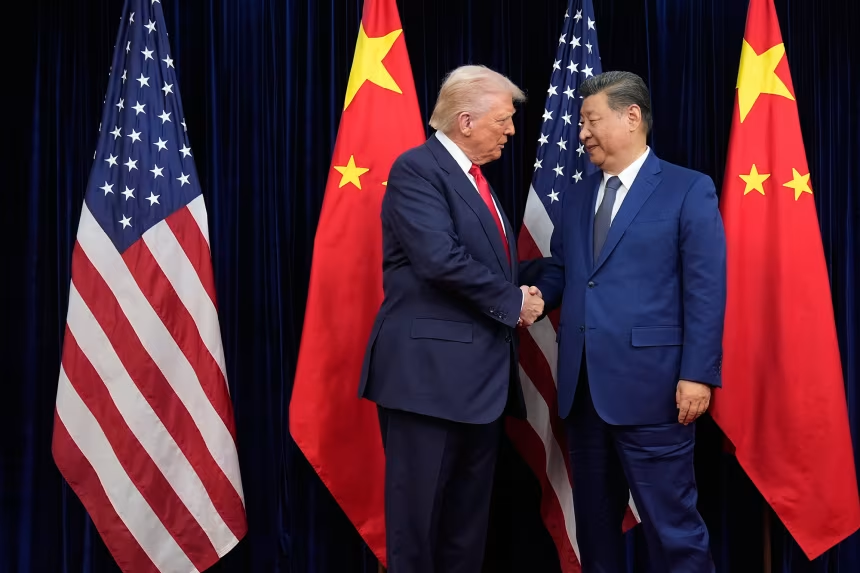U.S. Cuts Tariffs on Chinese Goods as Bitcoin Faces Unexpected Pressure

The United States has announced a significant reduction in tariffs on imports from China, dropping the rate from 100% to 47%. This decision follows a pivotal meeting on Wednesday between President Donald Trump and Chinese President Xi Jinping. Officials described the talks as productive, paving the way for eased trade barriers that had strained relations between the two largest economies.
Trump released a statement highlighting key outcomes from the discussions. He confirmed that issues surrounding rare earth minerals have been settled, ensuring a stable supply chain for critical industries. China also committed to resuming purchases of American soybeans right away, a move that supports U.S. farmers hit hard by previous trade disruptions. The president emphasized that this pact will hold for one year, with both sides anticipating an extension, and he plans to visit China in April to build on the progress.
Stay In The Loop and Never Miss Important Crypto News
Sign up and be the first to know when we publishTrade Deal Sparks Mixed Reactions in Crypto Markets
Bitcoin traders had anticipated a rebound after the tariff news, given the asset's sensitivity to global trade developments. Just weeks earlier, the initial tariff escalation triggered a sharp $20 billion wipeout in Bitcoin's market value, underscoring its ties to macroeconomic shifts. Yet despite the de-escalation of over 50% in tariffs, Bitcoin dipped 4.22% over the last 24 hours, settling at $108,398.96 and lagging slightly behind the overall cryptocurrency sector's 4.08% decline.
Analysts point to broader risk aversion as a primary factor in the downturn. With the Federal Open Market Committee (FOMC) meeting being held yesterday, investors were bracing for potential signals on interest rate trajectories. With the 25-basis-point cut, it has significantly impacted risk assets such as Bitcoin and cryptocurrencies.
Lingering uncertainties from U.S.-China dynamics continue to ripple through financial circles. Even as tariffs ease, the memory of heightened tensions contributes to a cautious stance among participants. Gold's recent 10% plunge has further eroded confidence, prompting some to shift toward traditional safe havens like cash and the strengthening U.S. dollar. This rotation away from riskier corners of the market has amplified pressures on cryptocurrencies, highlighting their vulnerability during periods of global unease.
Bitcoin's movements have grown increasingly synchronized with major stock indices, such as the Nasdaq-100, which has shown signs of fatigue amid tech sector headwinds. As equities soften, the knock-on effect pulls digital assets lower, reinforcing a pattern where crypto mirrors broader sentiment rather than decoupling as some had hoped. The crypto market sentiment analysis, a barometer of trader psychology, currently reads 63 in the positive zone for today's sentiment, however with a trending sentiment of 'Moderate Bearish Trend' for the past week, indicating that the overall crypto sentiment has been negative. If you click on the '30 Days' button, the trend changes to 'Strong Bearish Trend' indicating an even more negative trend in the crypto markets recently.

This tariff adjustment arrives at a delicate moment for international commerce, where supply chain stability remains paramount. Resuming soybean exports not only bolsters agricultural communities in the American heartland but also signals a thaw in agricultural trade disputes that have persisted for years. Rare earth resolutions address a bottleneck for technology manufacturing, from electric vehicles to consumer electronics, sectors that increasingly intersect with blockchain innovations.
In the crypto space, the lack of an immediate positive response to the trade news underscores the multifaceted influences at play. Traders must navigate not just policy announcements but also intersecting forces like monetary policy and commodity swings. As the market digests these developments, Bitcoin's path forward hinges on how quickly sentiment can pivot toward optimism.

